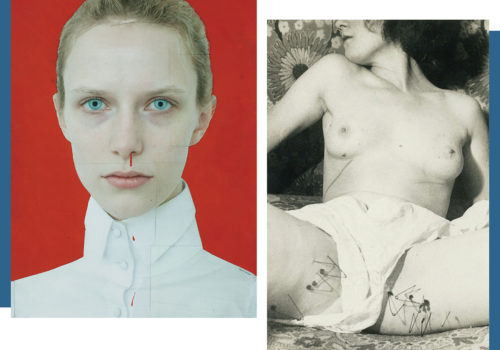This is the fifteenth dialogue of the Ettore Molinario Collection. A dialogue dedicated to the theme of the wounds that rip our body apart and to the images that, by recording these gashes, transform the experience of pain into an experience of knowledge. The measure of this collection is emotional composure even where the eyes, the mind, the heart sometimes wince. But it is to these impassive and hypnotic faces that I wanted to entrust the meaning of my research. And these same faces invite you to follow our next appointments.
Ettore Molinario
We would like to say that we feel the blood flowing in our veins, it would be very romantic, but it is not true. We only know the mechanics of this phenomenon, the heart beating and carrying oxygen-rich blood to every fibre of the body. Our body is an invisible organism, closed and protected by the soft surface of the skin, and we do not want to see anything of what happens inside, in its flesh, in its fluids, in its guts, in its processes. Opening the body, even if only in our mind, would mean to hurt it, and we suffer terribly. But images know no limits, they are stronger than fear and disgust. And so, in a part of the Western world that has made wounds the symbol of a god-man and of our salvation, the images open up and invite us to enter.
It had never happened before that a trickle of blood ran on a model’s face, eyes and complexion the colour of ice, and came to stain a wonderful haute couture shirt. But Paolo Ventura, an extraordinary artist who was born contemplating war photographs and reconstructed their violence even in his work in fashion, knows that images open the body of reality and are violent by nature. He knows that where the face and body do not betray the spasm of pain and suffer intact in their beauty, looking there, we suffer more. And we continue to suffer because we cannot look away, not even when we observe a crown of pins and thorns that martyrise the thighs of a woman, who’s lying on a bed of flowers. A crucifixion from the 1930s, so much the white drapery resting on the sex is equal to that of Christ on the cross.
So why do we look at suffering? Why do these « open images », and the definition comes from Georges Didi-Huberman, enchant us and prevent us from closing our eyes? Because these « open images » are perhaps initiatory rites, they are the secret access to enter the darkness of physicality and bring us closer to that cognitive experience which is always pain. A small wound, a stripping and the body opens and invites us to look at the unwatchable. And if we seek our most truthful portrait, we are this splendid and terrible shapeless thing, this dark body, this horror that makes us breathe.
Ettore Molinario
















